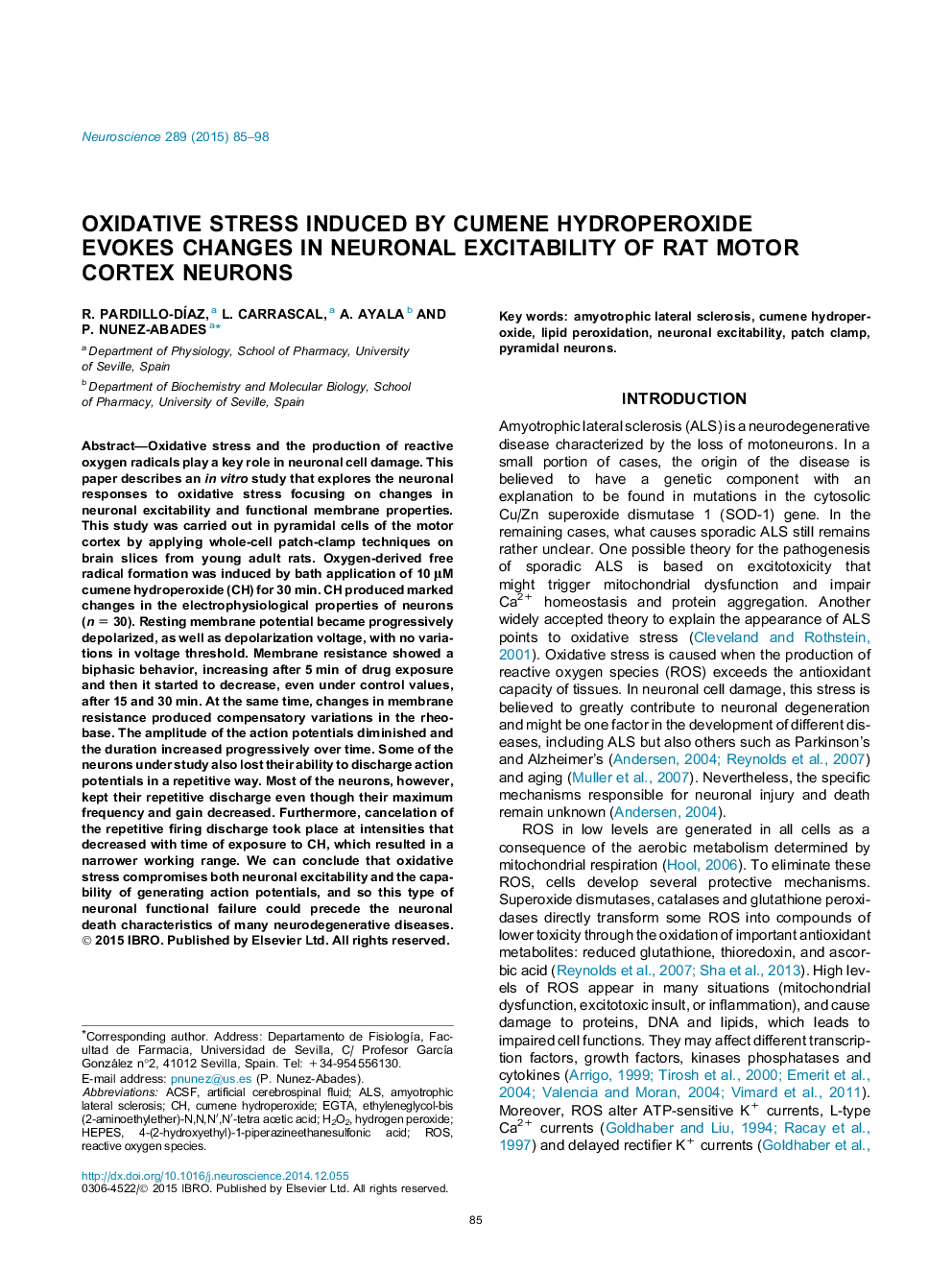| کد مقاله | کد نشریه | سال انتشار | مقاله انگلیسی | نسخه تمام متن |
|---|---|---|---|---|
| 4337537 | 1614787 | 2015 | 14 صفحه PDF | دانلود رایگان |
• CH compromises neuronal excitability.
• Input resistance, action potential and repetitive firing properties were altered.
• Some neurons lost their capability of repetitively discharging action potentials.
• Described alterations could precede neuronal death found in neurodegenerative diseases.
Oxidative stress and the production of reactive oxygen radicals play a key role in neuronal cell damage. This paper describes an in vitro study that explores the neuronal responses to oxidative stress focusing on changes in neuronal excitability and functional membrane properties. This study was carried out in pyramidal cells of the motor cortex by applying whole-cell patch-clamp techniques on brain slices from young adult rats. Oxygen-derived free radical formation was induced by bath application of 10 μM cumene hydroperoxide (CH) for 30 min. CH produced marked changes in the electrophysiological properties of neurons (n = 30). Resting membrane potential became progressively depolarized, as well as depolarization voltage, with no variations in voltage threshold. Membrane resistance showed a biphasic behavior, increasing after 5 min of drug exposure and then it started to decrease, even under control values, after 15 and 30 min. At the same time, changes in membrane resistance produced compensatory variations in the rheobase. The amplitude of the action potentials diminished and the duration increased progressively over time. Some of the neurons under study also lost their ability to discharge action potentials in a repetitive way. Most of the neurons, however, kept their repetitive discharge even though their maximum frequency and gain decreased. Furthermore, cancelation of the repetitive firing discharge took place at intensities that decreased with time of exposure to CH, which resulted in a narrower working range. We can conclude that oxidative stress compromises both neuronal excitability and the capability of generating action potentials, and so this type of neuronal functional failure could precede the neuronal death characteristics of many neurodegenerative diseases.
Journal: Neuroscience - Volume 289, 19 March 2015, Pages 85–98
